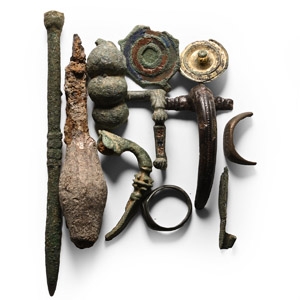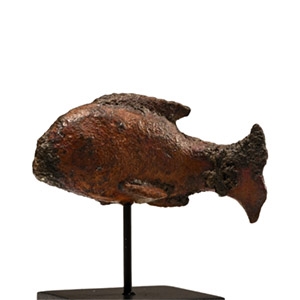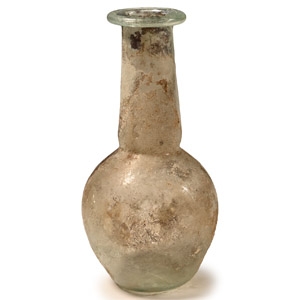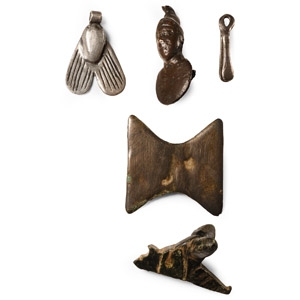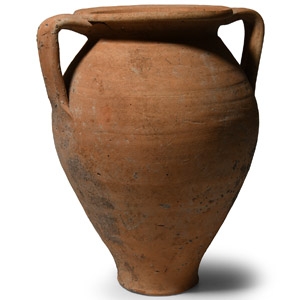Home > Auctions > 3 - 8 September 2024
Ancient Art, Antiquities, Natural History & Coins
Auction Highlights:
From an English private collection, 1970s-late 1990s.
English private collection.
Cf. Reinach, S., Repertoire de la statuarie Grecque et Romaine, Paris, 1930, figs. pp.6-14 (Zeus); pp.31-37(Asklepios); pp.149-151,163, (Hermes); 179,183 (Ares).
The original statue or bust represented an athletic type, probably a hero or a demigod, or the god of war, Ares. However, the presence of the cloak resting on the left shoulder could also recall statues of divinities, such as Zeus with his left arm raised, or Asklepios, or Hermes.
Ex German art market, 2000s.
Acquired from an EU collector living in London.
From the collection of Surrey, UK, gentleman.
Cf. Chadour, A.B., Rings. The Alice and Louis Koch Collection, volume I, Leeds, 1994, item 263, for type.
From the collection of the famous author, writer and speaker, Gordon Bailey, Essex, UK; formed since 1968.
Bailey, G., Detector Finds 5, Witham, 2002, p.79, fig.1.
Caltrops have been recovered from Roman sites where military action took place, and from medieval fortresses areas. Caltrops were used to slow down an enemy infantry attack, and were a deterrent to mounted soldiers.
From a collection acquired on the UK art market from various auction houses and collections mostly before 2000.
From an important Cambridgeshire estate; thence by descent.
Cf. Durham, E., Metal Figurines in Roman Britain, vol. 2, Reading, 2010, pl.181, for Flora holding up a wreath.
The hand raising the laurel wreath, symbol of Roman victory, could belong to a statuette representing the winged Victory, Nike. However, an important statuette of Flora, goddess of flowering and cereals, found in Witcombe Villa, represents her with raised hand holding a similar wreath, which does not necessarily correspond to a laurel wreath, but to an intertwined wreath of flowers , symbol of prosperity and spring.
From the collection of the famous author, writer and speaker, Gordon Bailey, Essex, UK; formed since 1968.
Cf. The Metropolitan Museum, New York, accession numbers 98.11.34; 89.4.2429 and 89.4.1614, for similar.
The bell was probably used inside a temple where its melodic sound was thought to add to the aura of reverence and mystery. In Mithraic temples, bells were rung as part of the ceremonial, while in the cult of Attis the bell and tympanum were also used to serve food and drink as the critical part of the rituals of consumption. One Roman order of priests applied the term
Found various site in the UK.
Ex N.Mills.
From a collection acquired on the UK art market from various auction houses and collections mostly before 2000.
From an important Cambridgeshire estate; thence by descent.
Ex German art market, 2000s.
Acquired from an EU collector living in London.
From the collection of Surrey, UK, gentleman.
Cf. Bayley, J. & Butcher, S., Roman Brooches in Britain: A Technological and Typological Study based on the Richborough Collection, London, 2004, item 259, for type.
Ex London, UK, collection, 1980-1990s.
Cf. Whitehouse, D., Roman Glass in the Corning Museum of Glass, vol.2, New York, 2001, item 772.
Collected from 1970-1999.
From the collection of the late Mr S.M., London, UK.
From the collection of the famous author, writer and speaker, Gordon Bailey, Essex, UK; formed since 1968.
Bailey, G., Buttons and Fasteners 500 BC-AD1840, Witham, 2004, item 10.1 (butterfly toggle).
Acquired before 2000.
From an English private collection.
625 - 636 of 3369 LOTS

.jpg)

.jpg)
.jpg)
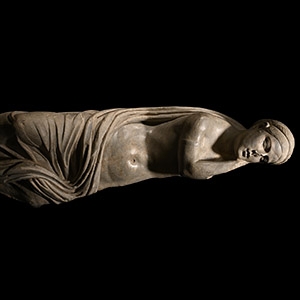
.jpg)
.jpg)

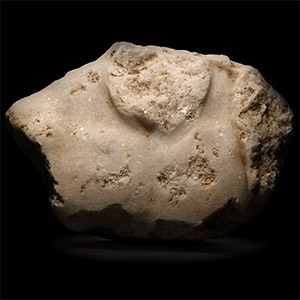
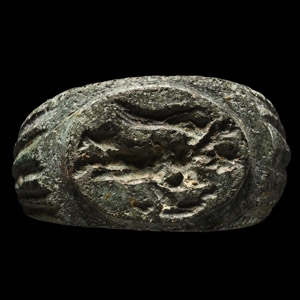
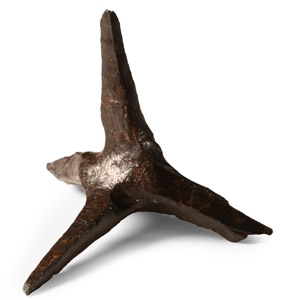
.jpg)

